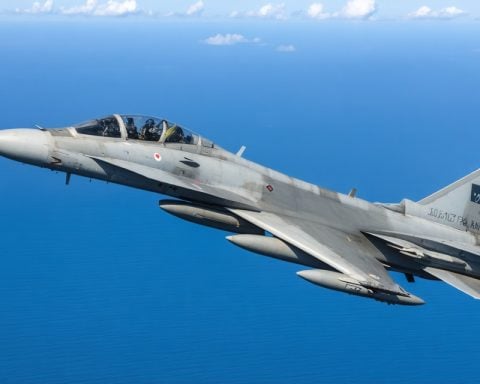The future of aviation is being redefined by the F-35 Lightning II, a marvel in aerospace engineering. While traditionally celebrated as an advanced military fighter jet, the F-35 serves as a beacon of emerging technologies that are reshaping not only defense but potentially the entire aviation industry.
Artificial Intelligence Takes Flight
A standout feature is its use of Artificial Intelligence (AI) to perform predictive maintenance—a capability that reduces the downtime of aircraft and enhances their operational readiness. This innovation is a key indicator of AI’s transformative potential across various sectors. With AI-driven systems performing complex tasks, one wonders if this predictive maintenance could revolutionize civil aviation, minimizing flight delays and reducing costs while increasing overall safety.
Data Connectivity: A Glimpse into the Future
The F-35’s capability to process and share vast amounts of data swiftly across networks hints at a future where real-time data exchange could significantly upgrade safety and efficiency protocols in commercial aviation. This seamless connectivity might set a standard that civilian airlines could adopt, leading to more robust communication systems that ensure passenger safety and improve operational efficiencies.
The Debate Over Costs and Benefits
Despite its technological advancements, the F-35 is at the center of debates due to its substantial costs. Critics question whether financial resources might yield greater benefits if allocated to other domains such as improving infrastructure or enhancing cyber-defense systems. The challenge remains in balancing cutting-edge military technology with economic feasibility and strategic necessity.
Ultimately, the F-35 is more than a military asset; it symbolizes a technological paradigm shift, with its advancements likely to shape future innovations beyond the aerospace sector. As we witness its groundbreaking contributions, the F-35 exemplifies how military progress can lead to broader improvements in human development and technological evolution. Visit Lockheed Martin for further insights into aerospace innovations.
The F-35 Lightning II: Redefining Aviation and Shaping Future Innovations
The F-35 Lightning II has been at the forefront of redefining the aviation industry. This article focuses on the new, relevant, and groundbreaking aspects that have emerged from its development, showcasing how the fighter jet is influencing broader trends, not only in defense but across various sectors.
Breakthrough Features and Innovations
AI-Driven Predictive Maintenance
The integration of Artificial Intelligence (AI) in the F-35 to perform predictive maintenance is a groundbreaking development. This technology allows for the anticipation of maintenance needs, significantly reducing aircraft downtime and enhancing operational readiness. The implications for civil aviation are promising; AI could minimize flight delays and increase safety while reducing operational costs.
Advanced Data Connectivity
The F-35’s capability to process and share data across extensive networks demonstrates the future potential of real-time data exchange. This seamless connectivity can improve safety and operational efficiency protocols in commercial aviation. By adopting such systems, civilian airlines could enhance communication and safety standards, ultimately benefiting passengers and the industry as a whole.
Economic Considerations and Strategic Impact
One of the key debates surrounding the F-35 involves its substantial costs. The high expenses raise questions about the allocation of resources, with some critics suggesting that funds might better serve infrastructure improvements or cyber-defense enhancements. Balancing cutting-edge military technology with strategic economic feasibility remains a crucial concern for policymakers.
Broader Implications and Future Predictions
Beyond its military capabilities, the F-35 is a symbol of a technological paradigm shift. Its innovations are expected to catalyze advancements extending beyond the aerospace sector into broader human development and technological evolution. Insights from the F-35’s development are paving the way for future breakthroughs in various fields, underscoring the interconnected nature of military advancements and civilian applications.
Sustainability and Security Aspects
Modern aviation developments increasingly focus on sustainability and security. The F-35 incorporates cutting-edge technologies aimed at reducing environmental impact and enhancing cybersecurity measures. These aspects are likely to influence future aircraft designs, prioritizing a balance between technological advancement and environmental stewardship.
Trends and Market Analysis
The defense and aviation sectors are witnessing a surge in demand for innovations such as those embodied by the F-35. As technologies like AI and advanced data connectivity become standard features, the market is expected to evolve, emphasizing efficiency, safety, and sustainability in future aviation models.
For more insights into aerospace innovations and technology, visit Lockheed Martin.







